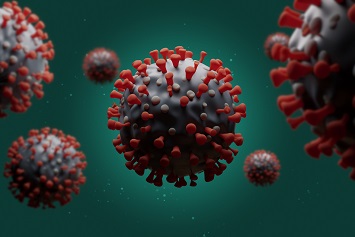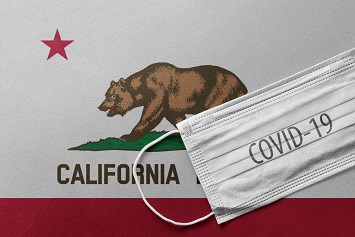The Centers for Disease Control and Prevention (CDC) and its National Institute for Occupational Safety and Health (NIOSH) provided updated resources on coronavirus disease 2019 (COVID-19) for employers. These include a fact sheet on case investigation and contact tracing, critical infrastructure sector response planning, and information for school administrators and school nurses.
The CDC offered a cleaning, disinfection, and hand hygiene toolkit for school administrators, as well as disease information for school nurses. It also explained that successful cleaning and disinfection in schools requires administrators to develop and implement a plan, as well as maintain and revise it. The toolkit includes handouts and posters for cleaning and disinfecting school classrooms and other campus facilities. The EPA maintains current lists of disinfectants effective against SARS-CoV-2, the virus that causes COVID-19.
The CDC also combined its “Implementing Safety Practices for Critical Infrastructure Workers Who May Have Had Exposure to a Person with Suspected or Confirmed COVID-19” and “COVID-19 Critical Infrastructure Sector Response Planning” documents, consolidating and clarifying essential public health information. The combined and streamlined document addresses the following issues:
- Growing evidence of transmission risk from infected people without symptoms (asymptomatic) or before the onset of recognized symptoms (presymptomatic);
- Ongoing community transmission in many parts of the country; and
- Continued focus on reducing transmission through social distancing and other personal prevention strategies that include cleaning and disinfecting commonly touched surfaces, hand-washing, and wearing cloth face coverings.
The CDC emphasized the need for community use of face coverings to curtail the number of COVID-19 infections. It suggested cloth face coverings may provide some “filtration for personal protection,” although cloth face coverings and surgical masks are not approved for respiratory protection. Whatever protection they may offer combined with droplet source control has been shown to reduce exposures to SARS-CoV-2.
The CDC said protection from infection increases as more people wear face coverings consistently and correctly.
The CDC and NIOSH also released a fact sheet for employers covering COVID-19 case investigations and contact tracing. Local public health departments are responsible for leading case investigations, contact tracing, and outbreak investigations.
Employers can help local public health departments by:
- Establishing a COVID-19 coordinator or team to serve as a resource for the health department and the workplace to help develop and put into action hazard assessment activities;
- Creating and implementing a COVID-19 preparedness, response, and control plan to help evaluate the risk of the spread of COVID-19 in the workplace and to choose actions to prevent its spread;
- Preparing information about the workplace, including work schedules, attendance records, and building map or floor plans for the health department, without revealing confidential personnel information;
- Performing a workplace hazard assessment to identify potential exposures to COVID-19 and using a hierarchy of control methods to limit the spread of COVID-19 in the workplace; and
- Encouraging employees to discuss their symptoms, exposures, and contacts with the health department.
Cal/OSHA COVID-19 Rules Take Effect
California’s emergency temporary standard (ETS) for workplace COVID-19 exposures became effective following a November 30 approval by the state’s Office of Administrative Law. The standard applies to workplaces in California not covered by the state’s Aerosol Transmissible Diseases (ATD) standard.
The four temporary state standards in California, Michigan, Oregon, and Virginia could provide models for a federal COVID-19 standard if the Occupational Safety and Health Administration under President-Elect Joe Biden decides to pursue one.
California’s rule is being administered and will be enforced by the state’s Division of Occupational Safety and Health (Cal/OSHA). Cal/OSHA already has posted a one-page fact sheet about the rule and a model COVID-19 Prevention Program (CPP) to help employers with compliance. Cal/OSHA also is preparing industry-specific webinars, beginning with the agriculture, food processing, and food service and restaurant industries. When dates and times become available, the agency will post the schedule (https://www.dir.ca.gov/dosh/coronavirus/Webinars.html) on its website.
Cal/OSHA also plans to hold a stakeholder meeting this month that will include industry and labor representatives to review requirements of the emergency regulation and accept any feedback or recommend updates; the agency has not yet announced a date, time, or access instructions.
“We understand the need to educate and assist employers as they implement the new provisions of the emergency standards,” Cal/OSHA Chief Doug Parker said in an agency statement.
“For employers who need time to fully implement the regulations, enforcement investigators will take their good faith efforts to implement the emergency standards into consideration,” Parker continued. “However, aspects such as eliminating hazards and implementing testing requirements during an outbreak are essential.”
The emergency regulations require that employers implement a site-specific written COVID-19 prevention program, addressing COVID-19 health hazards, correcting unsafe or unhealthy conditions, and providing face coverings. In addition to the prevention program rule, there are separate regulations for multiple COVID-19 infections and major outbreaks in the workplace or at a worksite. Employers must provide COVID-19 testing and notify local public health departments of cases of COVID-19, as well as positive test results in asymptomatic cases. The regulations also require accurate recordkeeping and reporting of COVID-19 cases. There also are regulations for employer-provided housing and transportation.
Ex-OSHA Administrator Joins Biden COVID-19 Board
Dr. David Michaels, former assistant secretary of Labor for Occupational Safety and Health during the Obama administration, has joined the COVID-19 board advising Biden and Vice President-Elect Kamala Harris on the pandemic. Michaels is an epidemiologist who was the longest-serving administrator in OSHA’s history, according to the Biden-Harris transition team.
The transition team also added Jane Hopkins, a nurse and labor union official, and Dr. Jill Jim, executive director at the Navajo Nation Department of Health to the board. The National Safety Council (NSC) had advocated for adding an occupational safety and health expert to the board that initially only included physicians and public health officials.
During Michaels’ term as OSHA administrator, the agency began an infectious disease rulemaking but did not complete it. The rulemaking was later removed from the Labor Department’s regulatory agenda.



